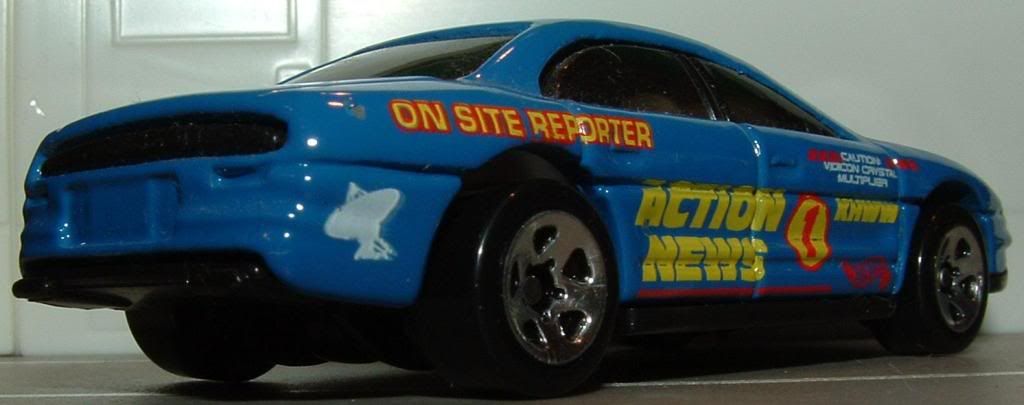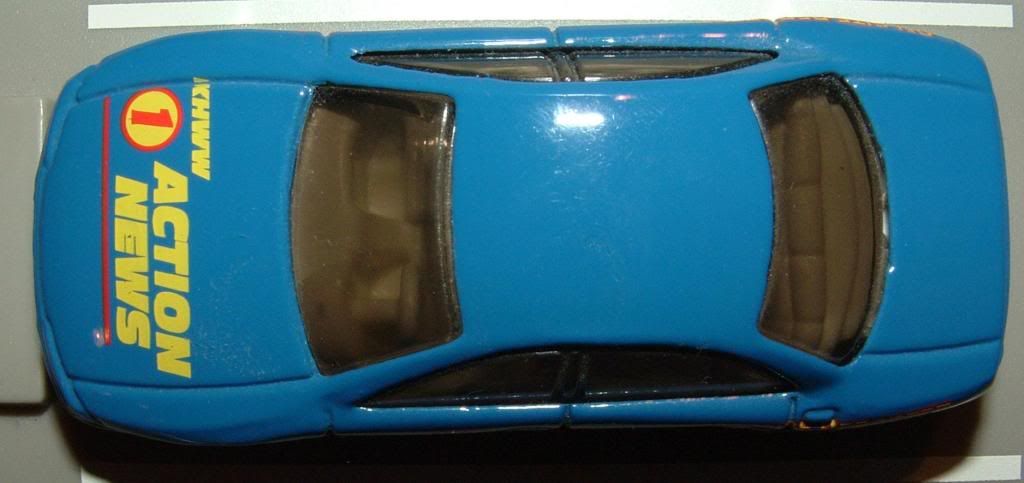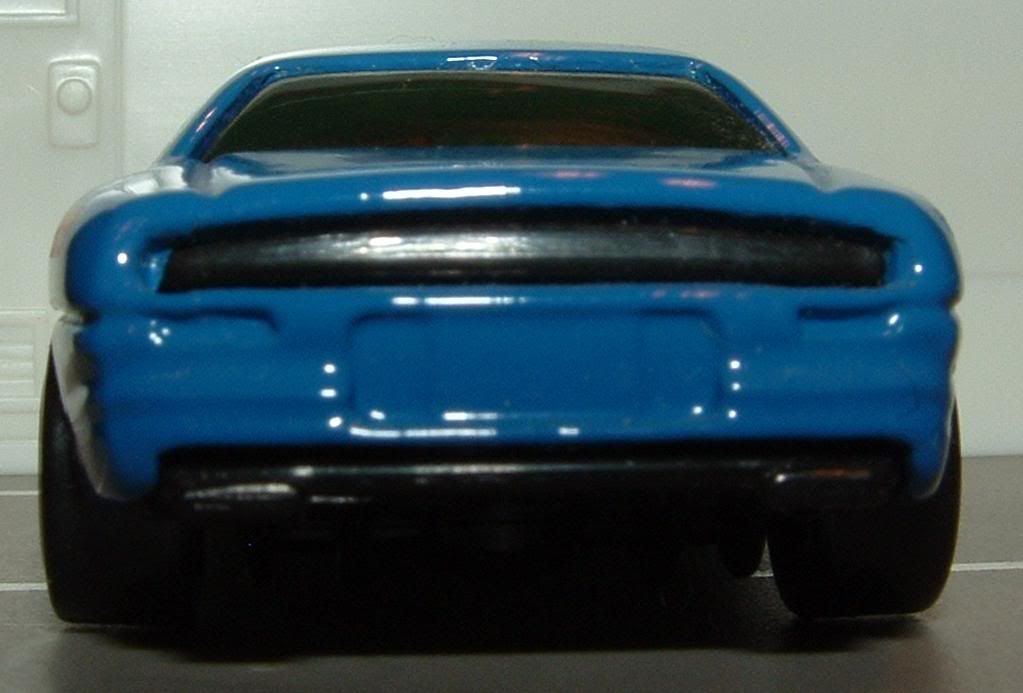
A blog focusing on 1/64 diecast from such popular brands as Hot Wheels, Matchbox, Johnny Lightning, M2 Machines, GreenLight, Tomica, Yat Ming, Majorette, MotorMax, Siku, Corgi, Guisval, Playart, Ertl, Zylmex, Racing Champions, & many more. Swifty's Garage features a daily Car Of The Day and news updates from your favorite brands!
Monday, February 7, 2011
Car Of The Day: February 7, 2011
Today's car of the day is Hot Wheels' 1995 Oldsmobile Aurora.
The Oldsmobile Aurora was a mid-size luxury sports sedan made by the Oldsmobile division of General Motors and launched in 1995. The Aurora rode on the same Cadillac-derived G platform as the 2-door Buick Riviera.
The Aurora became the flagship luxury sport sedan Oldsmobile powered by a 4 cam 32 valve 4.0L V-8 supplanting the Oldsmobile Toronado coupe and eventually the Oldsmobile 98 in the line-up. The Aurora offered both the V6-powered version and a V-8 powered version from 2001-03. It was equipped with a 4-speed automatic transmission with performance algorithm shifting.
Since the 1980s GM had wanted a new car to bring new life to Oldsmobile, a car that was "not your father's Oldsmobile"; thus the Aurora was born, with several styling cues taken from the 1960s Oldsmobile Toronado. By the time the Aurora was released, Oldsmobile badly needed the Aurora, in hopes for a comeback of the marque (Oldsmobile sales had plummeted from 1,066,122 in 1985, to just 389,173 in 1992). As a symbol of its clean break from other cars in the lineup, the Aurora bore no Oldsmobile badging or script save for the radio/CD/cassette deck and engine cover. Instead, a new emblem consisting of a stylized 'A' was used, foreshadowing a similar restyling of Oldsmobile's corporate 'Rocket' emblem for 1997.
With the Aurora, Oldsmobile tried to ride the praise of the car by launching other models that borrowed styling cues from the Aurora such as the Intrigue and Alero, as well as the redesigned Eighty-Eight, Silhouette, Cutlass, and Bravada. The Oldsmobile "rocket" logo was even updated to be more in-line with the Aurora's emblem.
For more information and pictures of the real car please visit: Oldsmobile Aurora
Has any automotive brand ever fallen so far so fast? In 1985 Oldsmobile sold more than a million cars. By 2000 the brand name was being phased out. By the early 1990s it was apparent that something needed to be done with Oldsmobile and the Aurora was intended to be the brand's saving throw. It didn't work. The "not your father's Oldsmobile" campaign alienated traditional Oldsmobile buyers but did little to bring in new buyers to the marque. The new Saturn marque intended to capture import buyers stole sales away from Oldsmobile instead. Then General Motors decided to aim Oldsmobile straight at newer luxury makes such as Lexus, Acura, and Infiniti as well as traditional imported luxury brands such as Mercedes-Benz and BMW. At the end GM's oldest brand went out with a whimper. To be joined less than a decade later by Pontiac, Saturn, and Hummer.
After much research and development, the Aurora went into production on January 24, 1994, and was released for the 1995 model year. It hosted a number of luxury and technologically advanced standard features including dual-zone climate control, leather seating surfaces, burl walnut interior accents, and power adjustable front seats with 2-position memory. An onboard computer displaying the date, current gas consumption, and other information was standard.
The Aurora also came standard with Oldsmobile's 4 L (244 cu in) L47 V8 engine, a DOHC engine based on Cadillac's 4.6 L Northstar V8. The Northstar engine and 4T80-E had been exclusive to Cadillac prior to the Aurora. The L47 put out 250 hp (186 kW) at 5600 rpm and 260 lb·ft (353 N·m) torque at 4400 rpm. A highly modified 650 hp (485 kW) version of this engine was used by General Motors racing division initially for Indy Racing League competition starting in 1995, then was later used in the Cadillac Northstar LMP program in 2000. Both engines retained the 4.0 L capacity, but the Northstar LMP version was twin-turbocharged.
The Aurora had a drag coefficient of 0.32.
The Aurora was highly regarded at the time for its refined engine, excellent build quality, well-balanced ride, and structural integrity. In fact, during normal crush-to-failure tests done by automakers to evaluate body rigidity, the Aurora's unibody construction actually broke GM's testing machine. A frame-crusher otherwise used to test stronger truck frames had to be used instead, with the car exceeding federal standards for passenger cars by two times.
First year sales were strong, with the Aurora selling over 45,000 units, but sales dropped dramatically for 1996, as in many cases, buyers were turned away by the large price tag. All first-generation Auroras were built in Lake Orion, Michigan, along with the Buick LeSabre, Buick Park Avenue, Buick Riviera, Oldsmobile 88, Oldsmobile 98 and the Pontiac Bonneville. Production for this generation ended on June 25, 1999.
Subscribe to:
Post Comments (Atom)






No comments:
Post a Comment